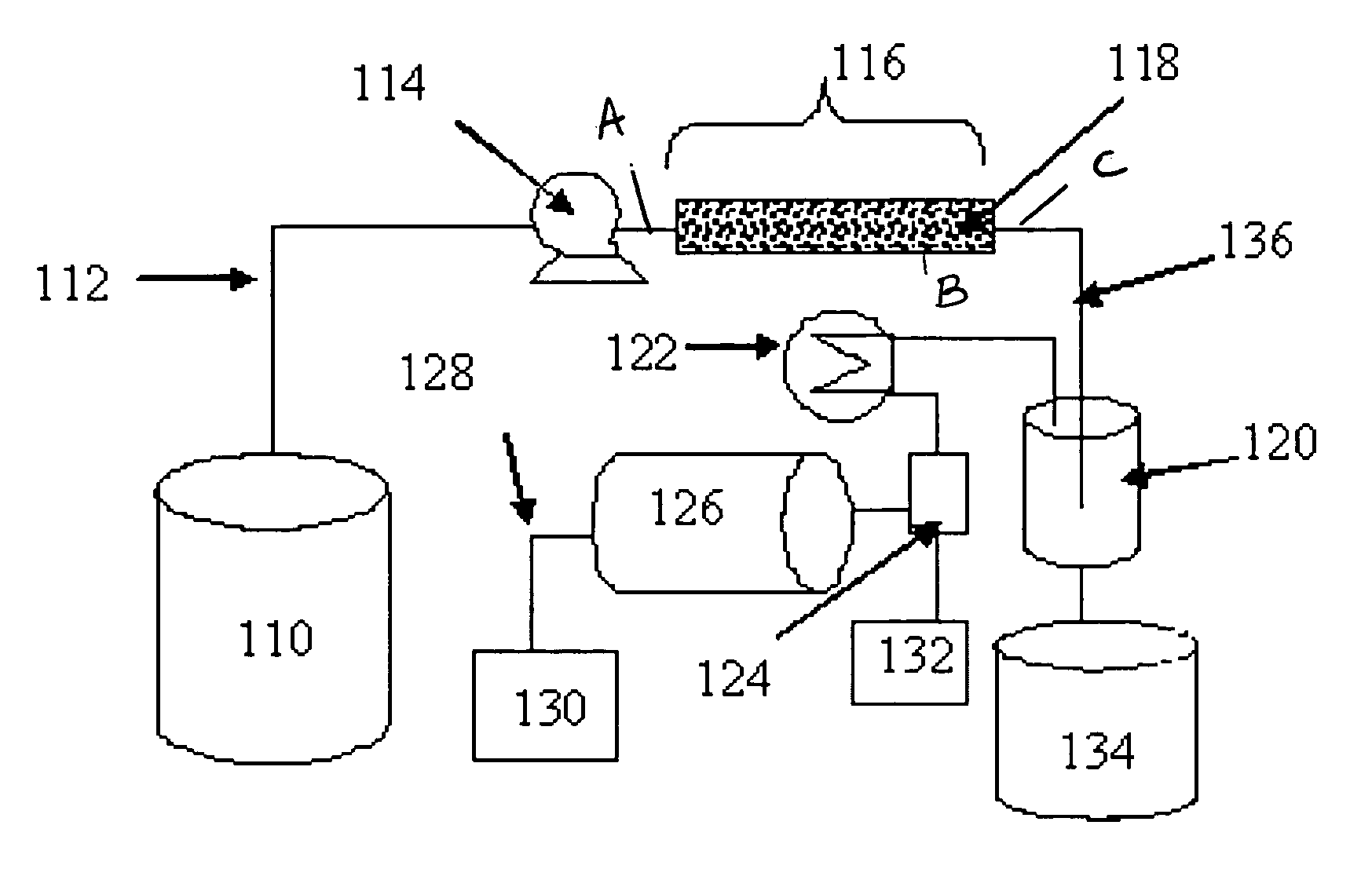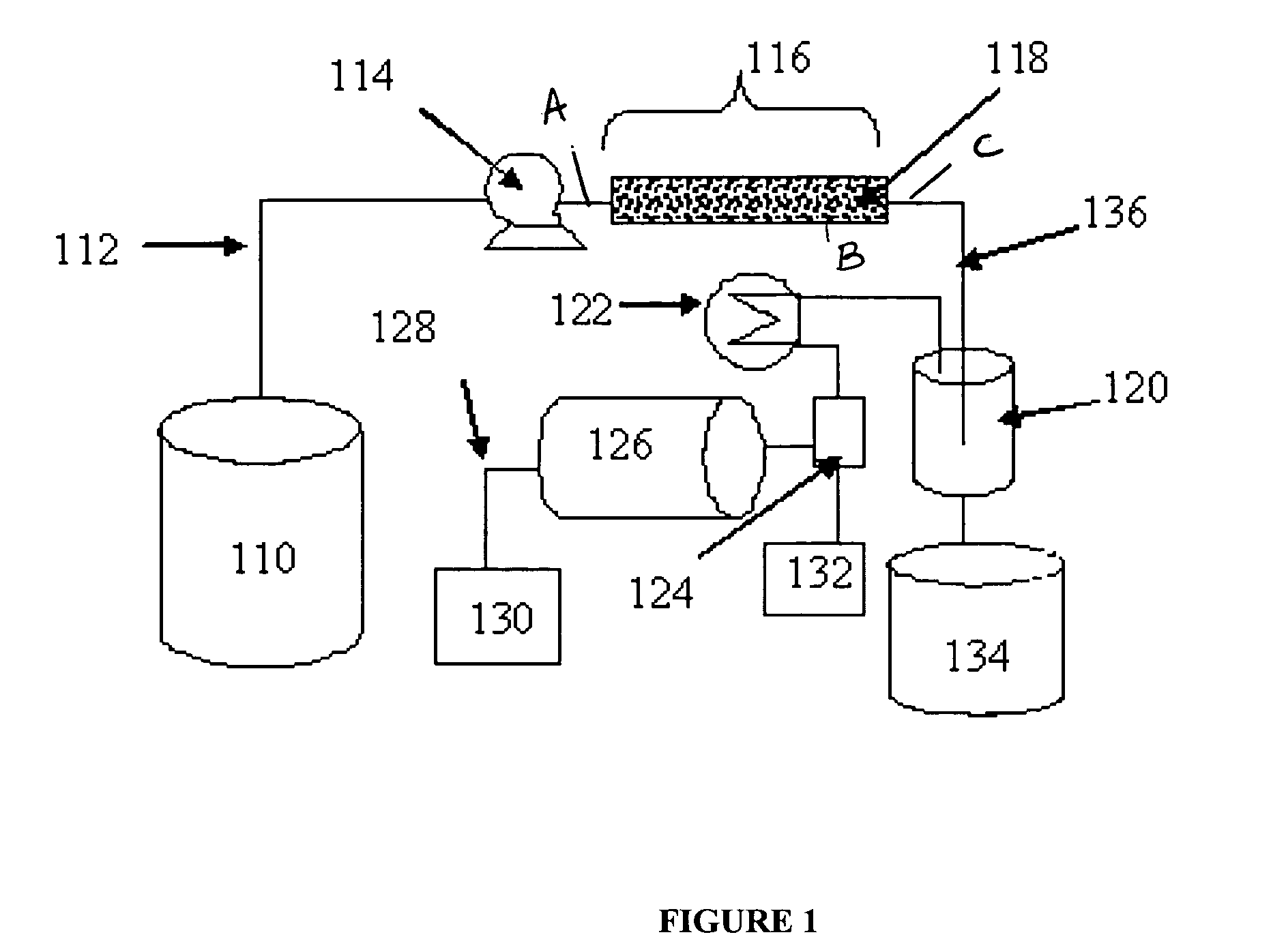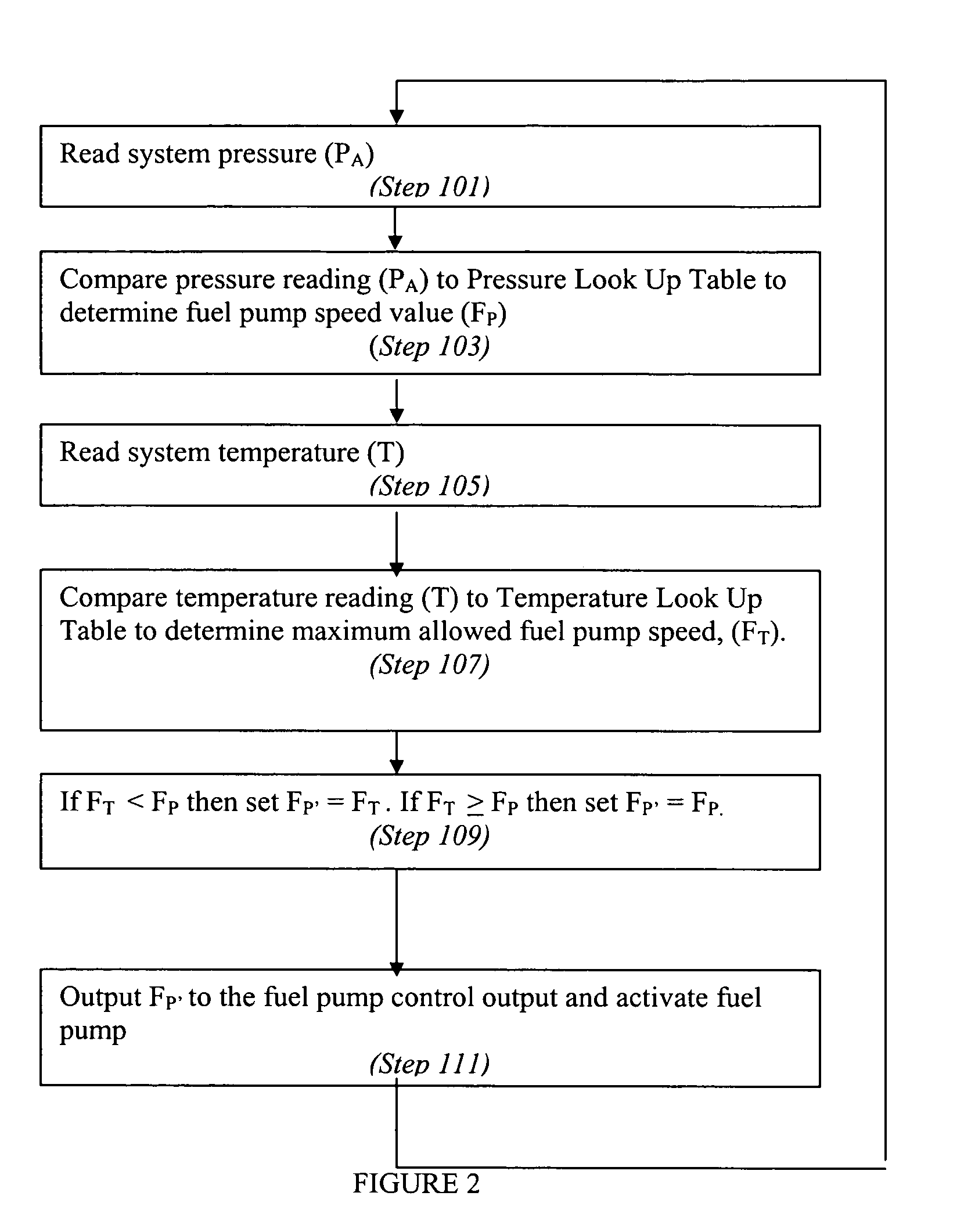Systems and methods for controlling hydrogen generation
a technology of hydrogen generation and control system, applied in chemical/physical processes, chemical apparatus and processes, inorganic chemistry, etc., can solve problems such as the complicated use of hydrogen gas in the general publi
- Summary
- Abstract
- Description
- Claims
- Application Information
AI Technical Summary
Benefits of technology
Problems solved by technology
Method used
Image
Examples
example 1
[0037] A hydrogen generation system as shown in FIG. 1 was controlled by a method according to the present invention and used to generate hydrogen for a fuel cell requiring hydrogen delivered at 25 psig and a gas flow rate of about 10 standard liters per minute. Referring to FIG. 1, the borohydride fuel solution is metered from storage tank 110 through fuel line 112 using fuel pump 114 and delivered into reaction chamber 116 comprising catalyst bed 118 where it undergoes the reaction of Equation (1) to generate hydrogen and a borate salt. The product stream is carried to a gas liquid separator 120 via conduit line 136 and the hydrogen gas is processed through a heat exchanger 122 to cool the gas stream to near ambient temperature and a condenser 124 to remove water from the hydrogen gas stream. Condensed water is collected in water tank 132. The hydrogen gas is fed to a ballast tank 126 and then carried through the hydrogen conduit line 128 to feed a fuel cell 130. The liquid borate...
example 2
[0041] The reaction chamber of the system described in Example 1 was equipped with inlet (Sensor A) and outlet (Sensor C) pressure and temperature (Sensor B) sensors that provided input to a controller element. The system was automatically controlled according to the method illustrated in FIG. 3. The controller received system pressure (PA and PC) readings at defined intervals in Step 201. The PA readings were compared to the Pressure LUT (Table 1A) to determine a flow rate (FP) for the fuel pump in Step 203. The difference in pressure determined in Step 205 was compared to a set point in Step 207. If the pressure exceeded the set point, the fuel pump was immediately signaled to stop feeding fuel to the reactor. If the pressure difference was below the set point, the controller determined the fuel flow by the comparison of fuel flow rates determined by the temperature and pressure lookup tables as described in Example 1 (Steps 209 to 215) to determine the maximum flow rate (FP′) for...
PUM
| Property | Measurement | Unit |
|---|---|---|
| outlet pressure | aaaaa | aaaaa |
| pressure | aaaaa | aaaaa |
| temperature | aaaaa | aaaaa |
Abstract
Description
Claims
Application Information
 Login to View More
Login to View More - R&D
- Intellectual Property
- Life Sciences
- Materials
- Tech Scout
- Unparalleled Data Quality
- Higher Quality Content
- 60% Fewer Hallucinations
Browse by: Latest US Patents, China's latest patents, Technical Efficacy Thesaurus, Application Domain, Technology Topic, Popular Technical Reports.
© 2025 PatSnap. All rights reserved.Legal|Privacy policy|Modern Slavery Act Transparency Statement|Sitemap|About US| Contact US: help@patsnap.com



